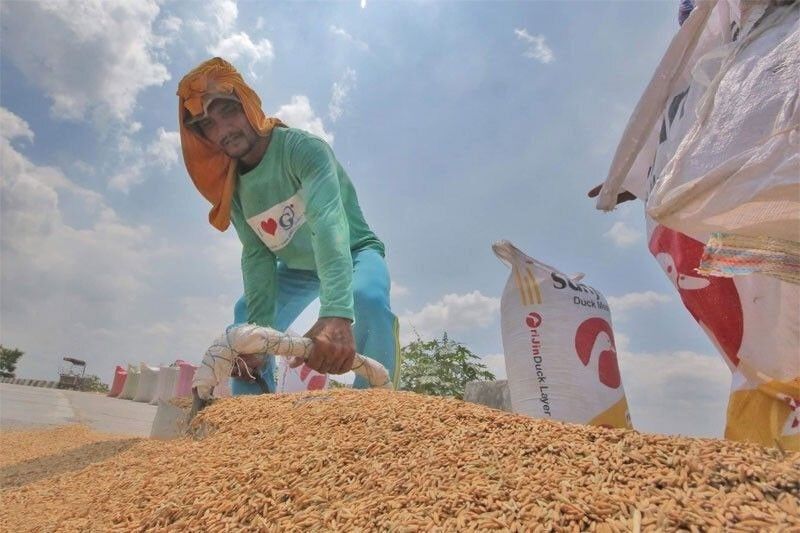President Marcos vows new rice technology

CEBU, Philippines — Farmers should benefit from the increase in rice production, President Ferdinand “Bongbong” Marcos said yesterday, as he cited the need to bring new technology to the rice field to ensure that the food staple remains accessible to ordinary Filipinos.
Speaking during the launching of the rice paddy art bearing his image in Batac, Ilocos Norte, Marcos said new technologies have become so important because of climate change, but the problem lies on how to move them from the laboratory to the market and how to produce a new product on a large scale.
"A lot has changed. We need to change a lot of things. We need to study them so that we can make sure that we have a stable source of supply and that that supply is affordable to ordinary Filipinos," said Marcos, who is also the agriculture secretary.
"It is the government that will develop the technologies that are necessary. It is the government that will allow the farmers to process their new product. It is the government’s job to bring now those new products to the market, and to make sure that whatever profits are made at the market, it will redound also to the benefit of the farmers," he added.
Marcos gave assurance that the agriculture department would tap the best technologies to address the problem.
"We have had to control the prices of rice because the markets are very volatile, so we are trying to stabilize it here in the Philippines," he said.
"We really need new technologies because of all of these developments. And that’s the part that institutions like MMSU (Mariano Marcos State University), like PhilRice (Philippine Rice Research Institute), and all the other agricultural research universities, stations do all around the country, that is the part that they play."
Marcos reiterated the need for the Philippines to increase its rice production, saying other countries are producing an average of eight to 10 tons per hectare while incurring low production costs.
The goal of the agriculture department is to work with other state agencies and the private sector to bring the rice to the market at an affordable price, he added.
“So, it’s correct we have to increase our production. But we have to make sure that that increase in production redounds to the benefit of the farmer. Because it is equally important for me that the farmer makes a good living,” Marcos said.
The Marcos administration has set rice price ceilings to ensure that the food commodity would remain accessible to consumers.
Under Executive Order No. 39 which took effect last Sept. 5, the price ceiling on regular milled rice is P41.00 per kilogram while the mandated price cap on well-milled rice is P45.00 per kilogram.
Rice paddy art
As an expression of support for the government's food security efforts, the MMSU and PhilRice launched a rice paddy art featuring the image of the president and the administration slogan 'Bagong Pilipinas'
In a statement, the MMSU said the “Bagong Pilipinas” slogan calls for a “deep and fundamental transformation” in all sectors of society, and “fosters the government's commitment towards the attainment of comprehensive policy reforms and full economic recovery in the country.”
“MMSU and PhilRice decided to feature President Marcos in this year's paddy art in support of his vision of a new Philippines, particularly on achieving food security and reinvigorating the country's agriculture sector,” the university said.
According to the MMSU, the rice paddy art was created using IR 1552, a traditional Korean purple variety, as the paint, and the NSIC RC 222 or Tubigan 18 as the green canvas. The NSIC RC 222 is a variety bred and released by the International Rice Research institute in 2010, which yields an average of 6.1 ton and maximum of 10 tons per hectare. It is one of the three nationally recommended varieties under the rice competitiveness enhancement fund seed program of the agriculture department.
“In creating the paddy design, the planters applied the anamorphosis principle, a technique used in 3D art that makes a picture look distorted, but appears normal when viewed from a certain angle,” the MMSU said.
During the launch of the rice paddy art, Marcos joked about the taste of the palay that formed part of his image.
“I was teasing the students. I said I hope that the palay harvested from my image, I hope it will taste good. It may have a bitter taste, you may have to modify it. But I don’t think that’s going to be a problem. MMSU will figure it out, PhilRice will figure it out,” he said.
“It’s particularly important, of course, it’s very entertaining to see your pictures drawn out on a rice field. But what it demonstrates – and it is a very kind gesture – but what it demonstrates is how much we already know about the cultivation of rice and other agricultural products.”
MMSU, the first state university built by Marcos’ late father and namesake, and PhilRice have been conducting rice paddy art every year since 2018.
Other images featured in the previous years were of the late president Ferdinand Marcos; the MMSU ACHIEVE agenda; former first lady Imelda Marcos; Santiago Obien, former MMSU president and PhilRice's first executive director; Don Mariano Marcos; 1978, MMSU's year of establishment; and Gen. Artemio Ricarte, father of the Philippine Army.
Rice paddy art started in Japan in 1993. — (FREEMAN)
- Latest























